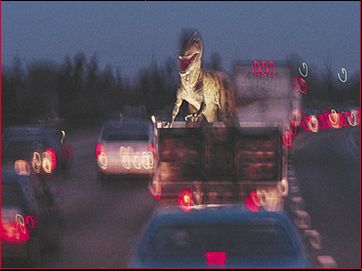


Over the past two years, Peter Menzel and I talked to researchers and
rifled through robotics laboratories in Europe, Asia, and America, exploring
projects in development. As we posed each robot for a portrait, often
with its human inventor and conducted hours of interviews, we attempted
to figure out what's coming down the pike. The machines we saw were often
barely functional, but they were clearly gaining capacity. We found that
the discipline of robotics-a quirky union involving the fields of artificial
intelligence, computer science, mechanical engineering, psychology, anatomy,
and half a dozen others - is moving fast. The discipline is moving so
rapidly, in fact, that some roboticists have been questioning the direction
that their work is heading. Not everyone we encountered felt inclined
to speculate on the future, of course. Scientists and engineers, for the
most part, try to focus on their work in the present. Robot researchers
take pains to distinguish themselves from robot pundits. But there is
something so magical about the creation of artificial living creatures
- mechanical entities with life-like behavior - that even the soberest
of these inventors must wonder about what lies ahead for their creation,
and for humankind. There is no shortage of soothsayers who will prognosticate
about the shape of millenia to come: Bill Joy, Hans Moravec, Rod Brooks,
Marvin Minsky and their fellows. Robots, they all agree, will transform
the future. The problem is that they differ on the details. Like whether
robots will serve us - or if we will serve them. Visiting laboratories
around the world, it became clear that for now we and the robots are in
this together, and the future is being created today.
- Faith D'Aluisio
Copyright
2000;
Peter Menzel and Faith D'Aluisio.
All rights reserved. No part of this website may be reproduced in any form by any electronic or mechanical means (including photocopying, recording, or information storage and retrieval) without permission in writing from the publisher.


